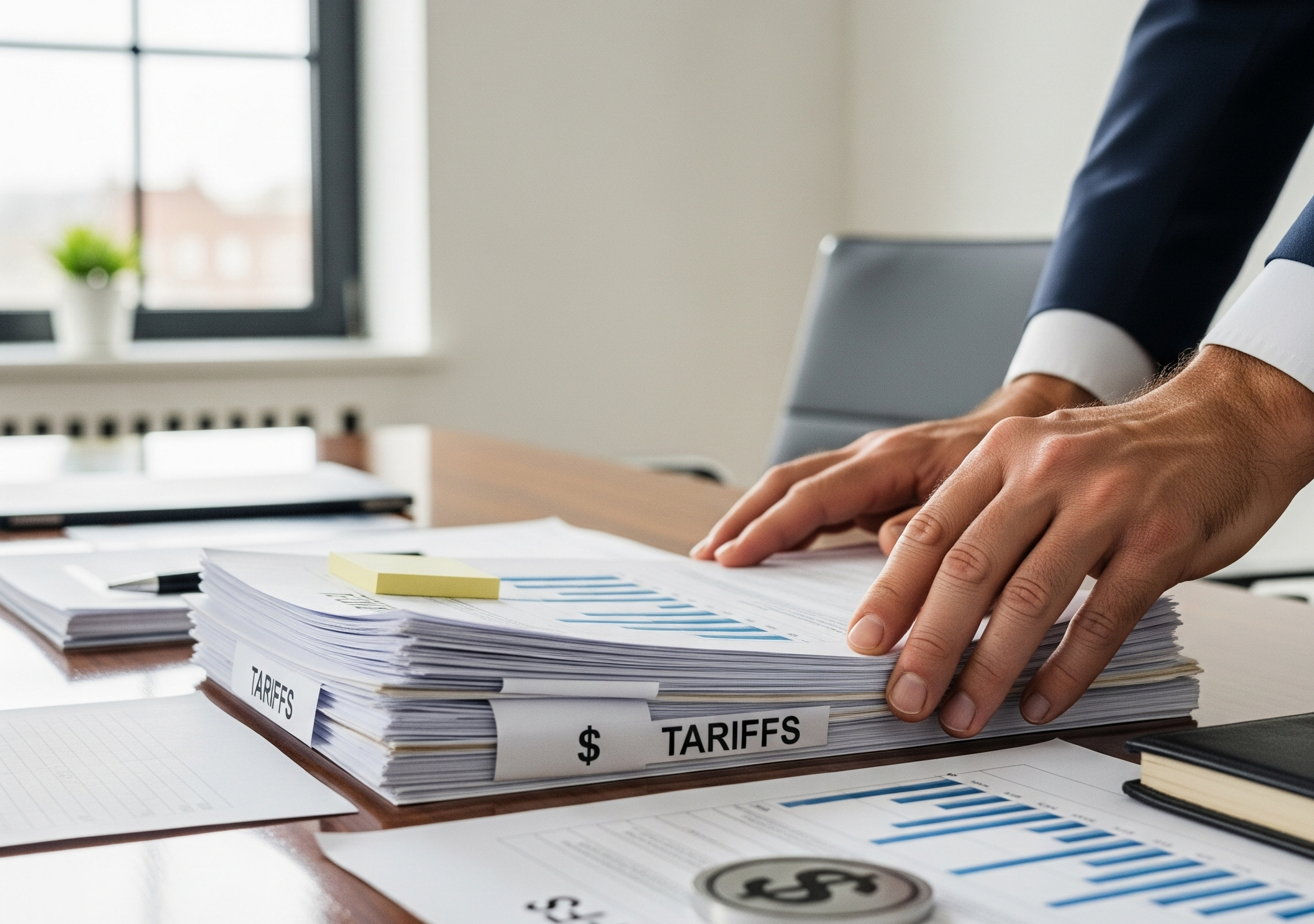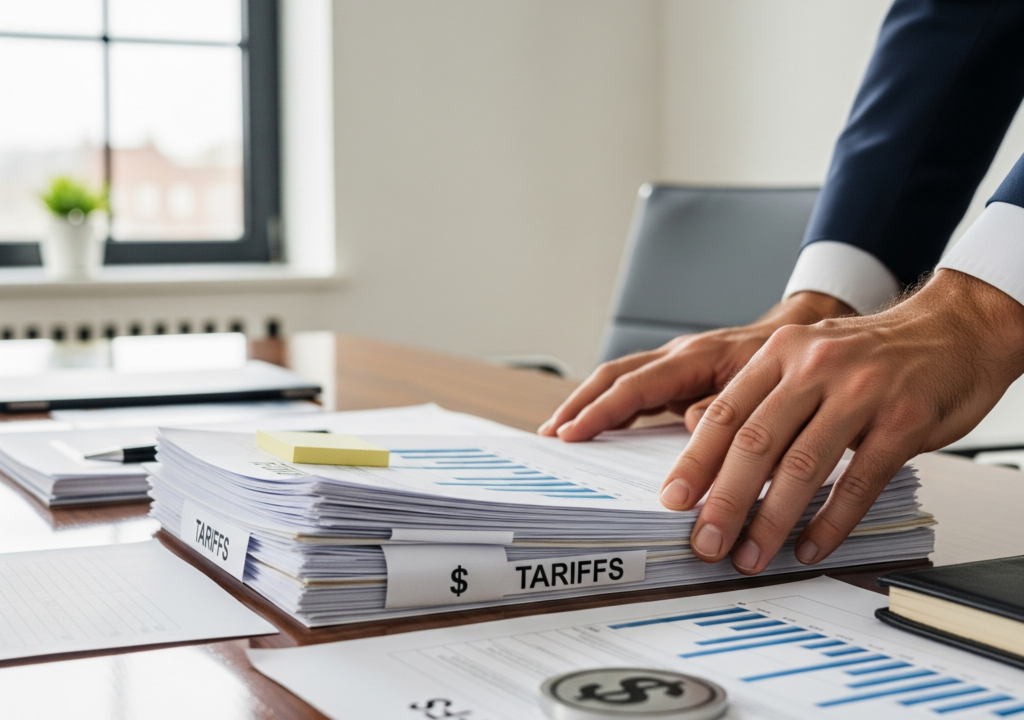
In an age where globalization has become the backbone of economic progress, the recent assertion by the highly respected British magazine, The Economist, has ignited a fervent debate across financial circles and beyond. By dubbing the surge in trade tariffs as the “greatest economic error of the Modern Era,” the publication has thrown a spotlight on the perilous waters of protectionism. This is not just a provocative headline; it encapsulates a growing unease about the ramifications of such policies on global economies, making us question the very foundations of modern trade.
At the heart of this discussion lies the striking illustration on The Economist’s cover depicting President Donald Trump cutting a hole shaped like the United States. This powerful imagery serves as a metaphor for the isolationist tendencies that tariffs can foster, suggesting that the act of erecting trade barriers might not only disrupt international relations but also erode the structural integrity of the American economy itself. As the world becomes increasingly interconnected, the ramifications of these policies extend far beyond national borders, echoing through supply chains, consumer prices, and even the job market.
To understand the implications of rising tariffs, we must first revisit the principles of free trade. Historically, free trade has been celebrated for its ability to stimulate economic growth, foster innovation, and create jobs. It operates on the premise that when countries engage in open markets, they can capitalize on their comparative advantages, leading to increased efficiency and productivity. The result? Lower prices for consumers and a wider variety of goods available in the marketplace. In contrast, protectionist policies, such as tariffs, aim to shield domestic industries from foreign competition. While this may temporarily benefit certain sectors, the long-term consequences can be detrimental.
Consider the case of the U.S.-China trade war, a prime example of how tariffs can backfire. Initially intended to protect American jobs and industries, the imposition of tariffs on Chinese goods led to higher prices for consumers and retaliatory measures from China, further escalating tensions. The consequences were not limited to mere economic statistics. Farmers, for example, found themselves caught in the crossfire, with agricultural exports to China plummeting. The irony is palpable: in an attempt to safeguard domestic interests, the U.S. inadvertently harmed its own economic fabric.
This brings us to a crucial point—the interconnectedness of the global economy. In today’s world, supply chains crisscross continents, linking producers and consumers in a delicate dance. Tariffs disrupt this harmony, leading to a ripple effect that can impact industries far removed from the original source of the tariff. For instance, a tariff on steel imports not only affects manufacturers who rely on steel but also raises costs for industries that use steel in their products, from automobiles to construction. The result is a cascading effect that can stifle innovation and slow economic growth.
Moreover, the political rhetoric surrounding tariffs often overlooks the fundamental principle of consumer choice. When tariffs are imposed, consumers face higher prices and fewer options. This is particularly concerning in a world where individual empowerment through choice is celebrated. Imagine a scenario where a small business owner, relying on affordable imports for their products, suddenly faces inflated costs due to tariffs. The result could be a loss of competitiveness, leading to downsizing or even closure. The very fabric of entrepreneurship—the ability to innovate and compete—can be jeopardized by protectionist measures.
As we navigate this complex landscape, it is essential to consider the long-term implications of tariffs beyond immediate economic metrics. The Economist’s assertion resonates with a broader narrative: that the rise of protectionism threatens to unravel decades of progress in global trade relations. The world witnessed the benefits of trade liberalization in the latter half of the 20th century, lifting millions out of poverty and fostering international cooperation. The question looms large: Are we willing to sacrifice this progress for the sake of short-term gains?
In contrast, proponents of tariffs argue that they serve as a necessary tool to protect domestic industries from unfair foreign competition and to address trade imbalances. While these points merit consideration, the challenge lies in crafting policies that strike a balance between safeguarding domestic interests and maintaining the benefits of free trade. Addressing issues such as intellectual property theft, currency manipulation, and labor standards should not be a justification for blanket tariffs but rather a call for nuanced negotiations that foster cooperation rather than conflict.
The path forward requires a collective reevaluation of our approach to trade. Rather than retreating behind protective barriers, nations must engage in constructive dialogues that prioritize collaboration and mutual benefit. This is particularly vital in a world facing unprecedented challenges, from climate change to public health crises. By embracing free trade and investing in innovation, countries can not only strengthen their economies but also contribute to global stability.
In conclusion, The Economist’s bold claim about the rise in trade tariffs serves as a clarion call for reflection and action. While protectionist policies may offer temporary relief to certain sectors, the broader implications for the global economy are profound. As we stand at a crossroads, the choice is clear: we can either retreat into isolationism or forge ahead with a renewed commitment to free trade and cooperation. The future of our economies, and indeed our world, depends on the decisions we make today. The question remains—are we ready to embrace the challenges and opportunities of a truly interconnected global economy?
